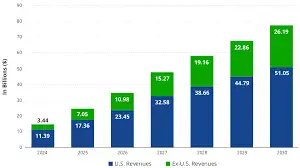
Unlock the Magic of Numbers: Your Fun Journey from 1 to 100
The Importance of Numbers in Our Lives
Numbers are a fundamental part of our everyday lives. From the time we wake up, the numbers on our clock tell us when to start our day. When we prepare meals, we measure ingredients using numbers. Throughout our work and leisure activities, numbers play a critical role in calculations, determinations of quantity, and management of resources. Beyond practical applications, numbers evoke curiosity and imagination, motivating us to explore math and science. Understanding numbers profoundly enhances our problem-solving skills and our ability to analyze the world around us.
Exploring Numbers from 1 to 10
Starting with the basics, let’s delve into the numbers one to ten. These numbers serve as the building blocks for all other numbers. They introduce us to key mathematical concepts such as addition and subtraction. For example:
One is the first number, representing unity.Two signifies partnership, as it is the first even number.Three is often associated with creativity and communication.Four represents stability, often depicted through the four corners of a square.Five introduces us to the human hand, which has five fingers, symbolizing functionality.Six is the first composite number and a representation of balance.Seven is often considered a magical number, found in many cultures.Eight signifies infinity, often represented visually by its shape.Nine signifies achievements and completion.Ten brings us the concept of bases in our numbering system, making it a crucial step in mathematics. Learning these numbers not only lays a foundation for counting but also influences our emotional and cultural perceptions of mathematics.
Understanding the Numbers from 11 to 20
As we progress, we unlock new layers of understanding in the numbers from eleven to twenty. These numbers are crucial for learning more complex mathematical operations. For instance:
Eleven introduces the concept of two-digit numbers, indicating we are moving beyond basic counting.Twelve, often associated with months in a year, highlights cyclical patterns.Thirteen can be seen as an unlucky number in many cultures, showing the intersection of numbers and beliefs.Fourteen leads us into the world of even numbers.Fifteen introduces multiplication as it is three times five.Sixteen is often the age of maturity in many countries.Seventeen brings in the concept of prime numbers, emphasizing their uniqueness.Eighteen indicates adulthood in many places, showcasing numbers' connection to life stages.Nineteen is a bridge to the next decade.Twenty represents a new milestone, the beginning of multiple tens in our number system. This range provides further insights into not only numerical relationships but also cultural significances and practical applications in various aspects of life.
The Fascinating World of Numbers from 21 to 100
Transitioning from 21 to 50
Upon reaching the numbers from twenty-one to fifty, we see a more extensive array of combinations and mathematical principles at work. Each number has its unique value and story. For instance:
Twenty-one introduces games of chance like blackjack.Twenty-five is a quarter of a hundred, symbolizing increments and fractions.Thirty implies the start of the thirties, often seen as a period of change in adulthood.Forty represents the halfway mark to eighty, emphasizing milestones.Forty-five introduces counting by fives. This range helps learners understand patterns, sequences, and the ways numbers can relate to each other as they advance towards fifty. Discovering the Numbers from 51 to 75
Continuing our exploration from fifty-one to seventy-five, we discover the world of larger values and operations. Here we dive deeper into understanding decimal places. For example:
Fifty-one is often perceived as the beginning of new experiences.Sixty signifies the importance of time management as there are sixty minutes in an hour.Seventy showcases the beauty of sevens, often deemed lucky.Seventy-five can resonate with completion as it is three-quarters of a hundred. These numbers familiarize individuals with division and multiplication, essential foundations as they begin the move towards more elevated mathematics. Wrapping it up with 76 to 100
Finally, as we approach numbers from seventy-six to one hundred, we witness the culmination of our journey. Each number serves as a stepping stone to further mathematical understanding and application. Consider the following:
Seventy-eight introduces the concept of square numbers when multiplied.Ninety symbols signify nearing completion and hitting major benchmarks.One hundred stands as a hundred percent, encapsulating the entire journey through life and learning. Mastery of numbers up to one hundred not only develops confidence in mathematical capabilities but also lays down the groundwork for future learning in subjects such as algebra and geometry. Each decade introduces novel concepts, paving the way for advanced numbers while intertwining fun and creativity in mathematics.Frequently Asked Questions
What are the most critical numbers in everyday life?
While all numbers hold significance, numbers such as one, two, five, ten, and twenty often have the most profound effects on our daily existence, as they play significant roles in counting, transactions, and measurements that we encounter frequently.
How can I make learning numbers fun for children?
Engaging children in fun activities such as games, rhymes, and visual aids can significantly enhance their interest and understanding of numbers. Using everyday situations like shopping or cooking to practice counting can also offer valuable, real-world applications.
Why is it essential to learn numbers up to one hundred?
Learning numbers up to one hundred lays a strong mathematical foundation necessary for understanding basic arithmetic, measurement, and foundational concepts in math that students will encounter in higher levels of education.
